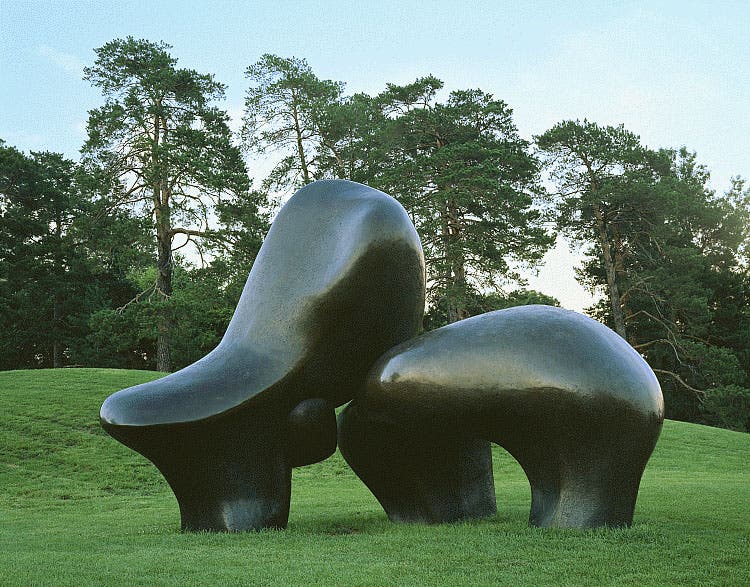Scientist of the Day - Henry Moore
Henry Spencer Moore, a British sculptor, was born July 30, 1898, in Yorkshire. Moore is one of the most famous of modern sculptors, and is best known for his large reclining figures, mostly cast in bronze and displayed outside. His work has been called semi-abstract, and that seems to be as good a term as any, because his forms seem recognizable, even if they often are not. There would be little reason for including him in a series of scientific anniversaries, were it not for two exceptional sculptures, one of which reposes right here in Kansas City.
In 1972, the Nelson-Atkins Museum acquired the first cast of a bronze sculpture called Sheep Piece. It is a Kansas City favorite and sits on a small knoll on the grounds of the museum, in the Donald J. Hall Sculpture Park. It shares the grounds with 10 other large Moore bronze sculptures, but they will not occupy us today, since they have no scientific theme. But Sheep Piece is a specimen of animal art, which we have often featured in our series. Moore was in no sense an animalier, like Antoin-Louis Barye or Hugo Rheinhold, but when he set out to capture the essence of sheep browsing on an English hillside, he showed his sculptural genius. The two pieces, one large and one not quite so large, nestled together, call up images of a mother ewe protecting her lamb, and the forms seem soft and warm, even if they are cold and bronze.
There were four casts of Sheep Piece. The first, cast 0, is owned by the Henry Moore Foundation and is on display at Moore's former home in Perry Green, Hertfordshire (third image). That setting is attractive because there are real sheep about, which provide both a reference and a sense of scale for Moore’s monumental sculpture. The other two casts are in Zurich, and on the grounds of the PepsiCo headquarters in Purchase, New York.
The other piece that allows Moore’s inclusion in a science series is his sculpture, Nuclear Energy (fourth image), that he did on commission from the University of Chicago, on the occasion of the 25th anniversary of the first atomic pile, which was built under the supervision of Enrico Fermi and became self-sustaining on Dec. 2, 1942. The sculpture sits on the exact site where the pile was built (at the time in a squash court under the stands of a stadium). It is not my favorite Moore sculpture – it seems he did his best when no one told him what they wanted – but it does evoke both the destructive power of the atom, with its mushroom-cloud dome, and the peaceful potential of atomic energy, with its open airy bottom (which Moore likened to a cathedral). Moore’s original title was Atom Piece, which seems immeasurably preferable to the title settled on by the University.
As a footnote, we might note that the Nelson-Atkins Museum has one other animal piece by Moore, which is called Animal Form (fifth image). I have never seen it on display, and I only ran across it while browsing the Museum’s catalog of Moore pieces, but I must say, I find it quite appealing. The bronze is about 30 inches long. It would look very nice on my desk, right next to the model Strandbeest of Theo Jansen.
William B. Ashworth, Jr., Consultant for the History of Science, Linda Hall Library and Associate Professor emeritus, Department of History, University of Missouri-Kansas City. Comments or corrections are welcome; please direct to ashworthw@umkc.edu.











